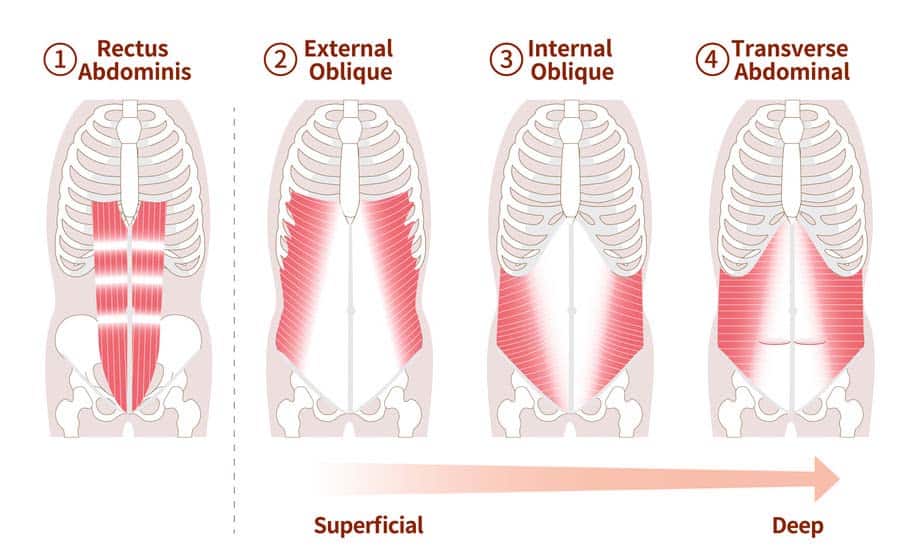
Anatomy Corner: TA
What is the Transversus Abdominis Muscle?
The transversus abdominis (TA) is the deep abdominal muscle that forms a corset-like structure around the lumbar spine, and when contracted, helps to stabilize it.
The stabilizing core muscles include the pelvic floor muscles, transversus abdominis, internal obliques, multifidus, and the diaphragm. When used correctly, these muscles can help protect the spine, and possibly prevent common low back injuries, which can be debilitating. Strengthening these muscles can also help prevent bowel and bladder dysfunction.
A Simplified look at the Anatomy of the Transversus Abdominis (TA):
The TA is a deep abdominal muscle that wraps around the lower thoracic and all of the lumbar spine, in a horizontal plane. When the muscle is contracted, it supports the lower spine much like the lumbar support braces that movers wear.
Just like any muscle in the body, in order for it to activate or turn on when needed, the TA needs to be trained. Research has shown that the TA can indeed be trained to fire on demand when it is required for lumbar support. The length of time it takes to activate the TA and how long it remains activated is variable, but is also trainable.

A 2017 study by Selkow, Eck, and Rivas et. al. was able to illustrate this concept by observing TA activation with ultrasound. A treatment group was given supervised progressive core strengthening exercises over a four week period, and TA activation time and contraction duration were compared throughout with a matched control group. At the end of the 4 weeks, significant changes were found for activation and length of sustained hold of the TA in the exercise group. This study demonstrates a definitive effect of progressive core strengthening on the TA, which can be inhibited and/or especially difficult to isolate for an individual with an injury or low back pain.
Proof that deep stabilizing muscles like the TA can be trained leads us to include core activation in almost all physical therapy exercise programs. Contact your therapist or Pilates instructor at Centurion to further explore transversus abdominis activation!
By Aubin Sullivan

